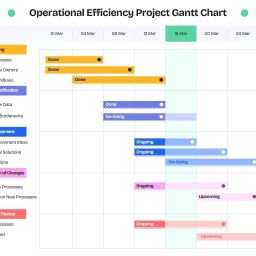
Remote work has become the new normal for many of us, making effective project management tools almost essential for productivity and efficient teamwork. The right project management platform not only streamlines workflows but also helps connect distributed team members.
Trello – simplicity and flexibility for visual thinkers
Trello is a real favourite among remote teams thanks to its intuitive, card-based interface. It uses boards, lists and cards to represent projects, tasks and subtasks and this makes it easy for users to track progress at a glance. Trello’s drag-and-drop functionality is ideal for visual planners, while its integration with tools such as Slack, Google Drive, and Dropbox ensures seamless workflow management. The platform’s flexibility means it can be adapted for everything from sprint planning to content calendars, making it suitable for teams of all sizes.
Asana – powerful task tracking and automation
Asana is known for its task management capabilities. Remote teams are able to create projects, assign tasks, set deadlines and monitor progress through various views such as lists, boards and timelines. Asana’s automation features reduce repetitive work by allowing users to set up custom rules and triggers. Its reporting tools provide valuable insights into team productivity, helping managers identify bottlenecks and optimise processes. Asana’s integrations with communication and file-sharing platforms further enhance its appeal for distributed teams.
Monday.com – customisable workflows and visual dashboards
Monday.com offers a highly customisable workspace that adapts to different project management methodologies, whether Agile, Waterfall, or hybrid. Its visual dashboards provide real-time updates on project status, resource allocation, and deadlines. Remote workers benefit from features like time tracking, automated notifications, and collaborative document editing. The platform’s extensive integration library ensures it fits smoothly into existing tech stacks, supporting everything from CRM to marketing automation.
ClickUp – all-in-one platform for diverse teams
ClickUp is a great all-in-one solution, which combines task management, goal tracking, document collaboration, and chat in a single interface. Its versatility makes it a strong choice for remote teams with varied needs. ClickUp’s customisable views-such as lists, boards, calendars, and Gantt charts-allow users to tailor their workspace to their preferred workflow. The platform also offers advanced features like workload management, time tracking, and detailed reporting, making it suitable for both small teams and large organisations.
Basecamp – straightforward communication and organisation
Basecamp is designed with simplicity in mind and is great for providing a central hub for project discussions, file sharing and task tracking. There’s a focus on communication in features like message boards, group chat and automatic check-ins, which help remote teams stay aligned without endless email threads. Basecamp’s flat pricing model is especially attractive for growing teams, offering unlimited users and projects for a single monthly fee.
Notion – flexible knowledge management and collaboration
Notion stands out for its ability to combine note-taking, task management, and document collaboration in one platform. Remote teams can create wikis, databases, and project boards, ensuring that information is easily accessible and up to date. Notion’s templates and customisation options make it adaptable to a range of use cases, from product roadmaps to meeting notes. Its collaborative editing features enable real-time teamwork, reducing friction in asynchronous environments.
Choosing the best project management tool of course depends heavily on your team’s specific needs, size and workflow preferences. Some platforms are better for visual planning, while others prioritise automation or communication. Key factors to consider include ease of use, integration capabilities, scalability and – of course – price.














